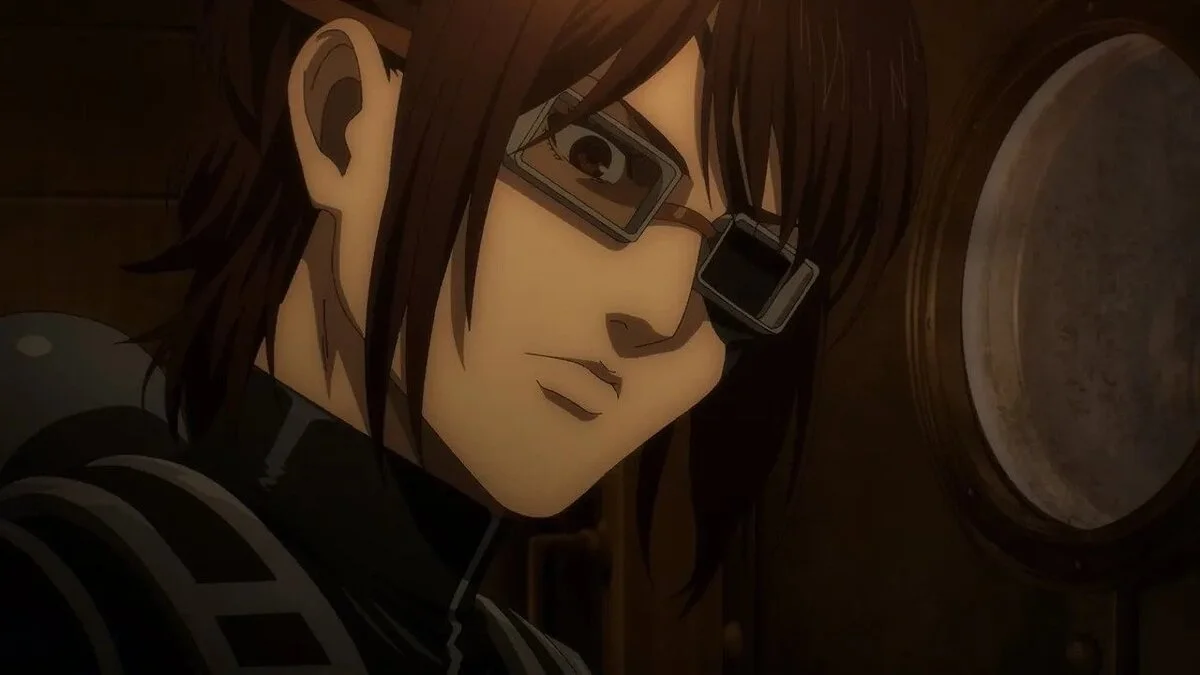Is Hange Zoë a Boy or a Girl in Attack on Titan?

Attack on Titan’s worldwide success is mostly owed to its incredible cast of complex characters and extensive worldbuilding. One of the characters that have been with us since the beginning is Hange Zoë, also known as Hanji. Hange is very hyperactive and eccentric, and they’re eternally passionate about discovering new things. It’s easy to love Hange’s character. Their personality is endearing, and their weirdness is relatable. But ever since they were introduced, western audiences have been wondering whether Hange Zoë is a boy or a girl. We’ll be exploring this topic and why it became a debate at length.
Kodansha, Attack on Titan’s publishing house, has confirmed that Isayama specifically instructed them to not use gendered pronouns for Hange, or at least to use “he” and “she” with the same frequency. From his past statements, we can surmise that Hange’s gender is unimportant to the story that Isayama wants to tell, and he leaves it up to the reader’s interpretation.
Still, many readers insist Hange is a tomboyish female, non-binary, or trans. According to Isayama, there is no “correct” answer. The entire point is to leave it up to the reader’s interpretations, and different people interpret different characteristics as masculine or feminine. In this article, we’ll take a look at how the confusion started, how the discourse unfolded in the fandom, why it was never a problem for the Japanese audience, and what Isayama has to say about all this.
Why is Hange’s gender being questioned?
Hange’s gender has been a bit of a hot topic ever since people realized the discrepancy between the way they’re depicted in the manga and the anime. In the anime, Hange is drawn with typically feminine characteristics, like long eyelashes, visible breasts, and larger hips.
In the manga, Hange is drawn a bit more ambiguously. Their large chin and hooked nose are a bit more pronounced, and they’re sometimes referred to as “sir”.
Isayama’s insistence on not gendering Hange also added to the discourse. People were frustrated at not being given the answer they expected, so the discussion about Hange’s gender became more and more hostile over the years.
Another thing that added to the discussion is the translation of the series from Japanese to English. In English, we always use gendered pronouns. Only recently did we start regularly using the singular “they”.
In Japanese, there are many more pronouns than in English. You can choose one of many pronouns to refer to yourself based on your gender identity, age, social status, and other factors. This is very difficult to translate into English, so there was some confusion and resistance from Western audiences.
Hange’s VA and feminine attributes in the anime
Some fans have stated that Hange must be a woman because their anime VA is also a woman. While Hange can be a woman if you see them as such, any long-time anime fan knows that the VA doesn’t say anything about the character they voice.
For English dubs, it’s usually white American voice actors that voice the Japanese characters. Many male characters are voiced by female voice actresses, for example Near from Death Note. Armin himself is voiced by Marina Inoue, a female voice actress, and Armin is explicitly shown to be a man.
In the anime, Hange is shown to have breasts, which can be used as evidence that Hange is a woman. Regardless if Hange has breasts or not, it has no bearing on what Hange identifies themselves as. Hange could be a man wearing a bra and we would never know.
Other attributes that we may associate with femininity are long eyelashes and long hair, both of which Hange has. At the same time, Hange has a pronounced hooked nose, which people think is a manly characteristic.
These points are less compelling than others, as I’m sure long-haired guys and hook-nosed girls would agree. They can certainly make you look more like a man or a woman, but they can belong to either gender.
Isayama’s say on Hange’s gender
As the creator, Isayama has the right to get the last word in when it comes to his characters. He has repeatedly declined to confirm any theories.
When he was asked about Hange’s gender in 2011, Isayama said it would be “better if I don’t say either way”. Fans speculated that Isayama drew Hange to be explicitly female from the beginning, but was offended that his fans couldn’t tell. This might be because Isayama uses references to various athletes. Either way, the rumor stuck.
When Kodansha, Attack on Titan’s publishing house, was asked whether Isayama had confirmed Hange’s gender, they gave an interesting answer. They said they’d been explicitly instructed by Isayama not to confirm Hange’s gender, use gender-neutral pronouns, or at least use “he” and “she” equally.
Kodansha then went back to previous volumes to adjust Hange’s pronouns according to Isayama’s instructions. Again, this was only a debate among English-speaking fans over the English translation, as the Japanese version didn’t use gendered pronouns in the first place.
Isayama also made a post on his official blog saying that if Hange had a character song, it would be the song Jibun Rashiku (True to oneself). The song is about not living life as a man or a woman but as yourself.
At the end of the day, it’s very clear that Isayama wants Hange’s gender to be up to your interpretation because it doesn’t matter to the story of Attack on Titan. If you saw Hange as a woman in the anime and you continue to do so, it’s completely valid to refer to Hange as “she”.
The same freedom is afforded to the people who want to call Hange “he” or “they”. The only wrong thing is to impose your image of Hange onto another person and state it as fact. It’s left purposefully ambiguous, as that’s what the creator intended.
